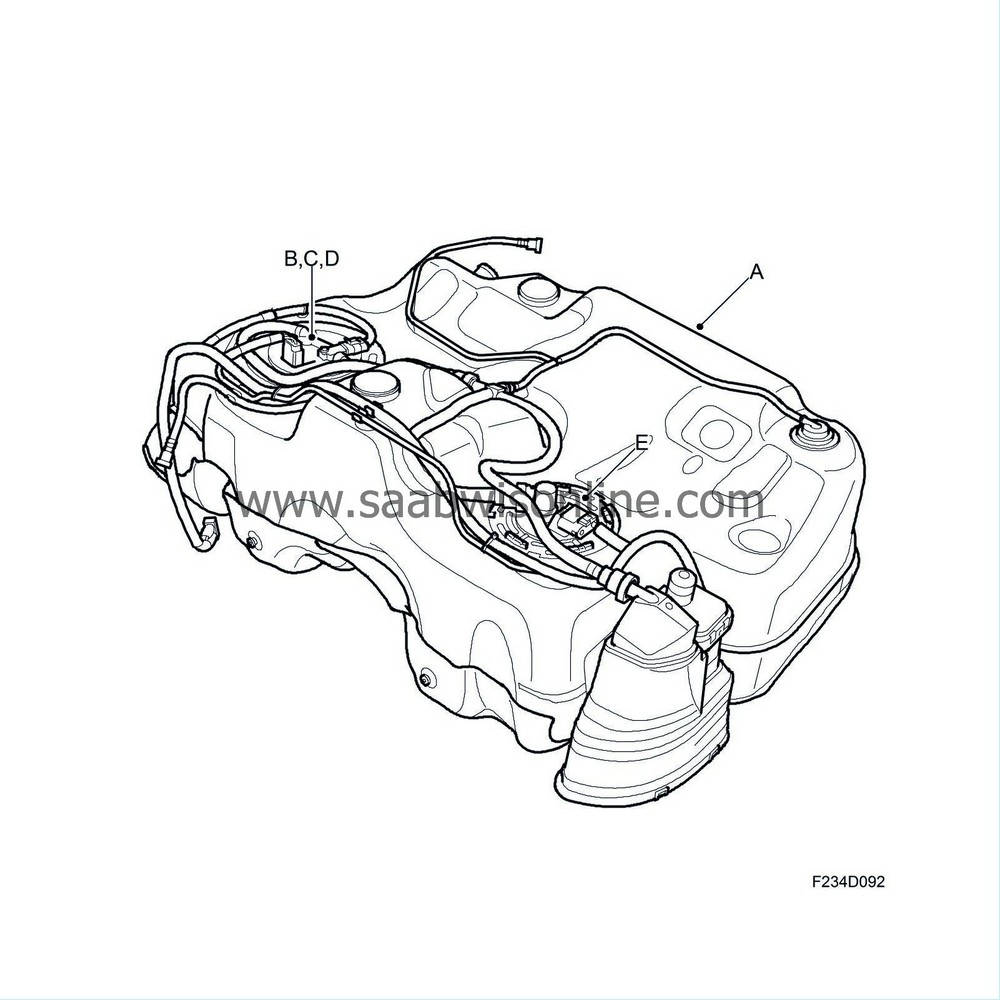Brief description, four-wheel drive tank
|
|
Brief description, four-wheel drive tank
|
|
D.
|
Level sensor, fuel, 46
|
|
E.
|
Fuel level sensor, 46 LH
|
The fuel system is non-return with variable pressure. An electric fuel pump is situated in the tank. Pump speed and thereby fuel pressure is varied by ECM regulating a power amplifier mounted near the fuel tank. This supplies the pump PWM voltage. ECM calculates the requested fuel pressure for each given operating point. A pressure sensor on the fuel rail measures current fuel pressure. The requested and actual fuel pressure are compared. If necessary, PWM to the fuel pump is adjusted to obtain the correct pressure.
A non-replaceable filter is mounted in the fuel pump unit. Fuel is led in a steel pipe from the bulkhead, at which point the line becomes a hose. The hose feeds the fuel rail. By allowing fuel pressure to vary based on engine need, injection capacity can be stretched over a large area. Furthermore, the fuel is subjected to less heating, which is beneficial from an emissions standpoint. The injectors are mounted in the intake manifold and point/inject toward the intake values - two jets toward each valve. ECM regulates the opening duration of the injectors through electrical impulses.
Because the tank is a saddle tank, there is a risk of fuel remaining in the left part. To ensure that fuel in the left part of the tank can be sucked up by the tank, four-wheel drive cars have an extra delivery line from the pump to the left part of the tank. Fuel is then pumped from the left side of the tank to the right side, where the pump is situated. The Venturi effect enables pumping and the capacity is approx. 10 l/hour. Tank capacity is 61 litres.
Four-wheel drive cars are equipped with an additional level sensor (46LH) located in the left part of the tank.
Overview

|
A.
|
Fuel pump unit (689), Fuel level sensor (46)
|
|
B.
|
Fuel level sensor (46 LH)
|
|
D.
|
Delivery lines inside tank
|




